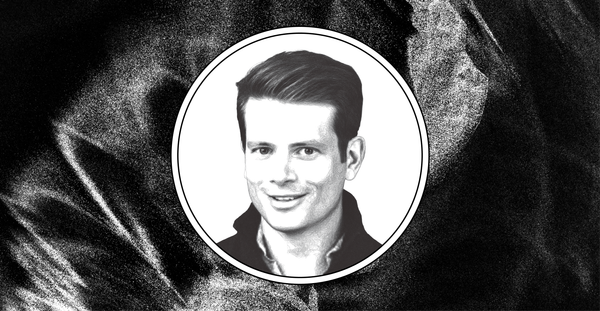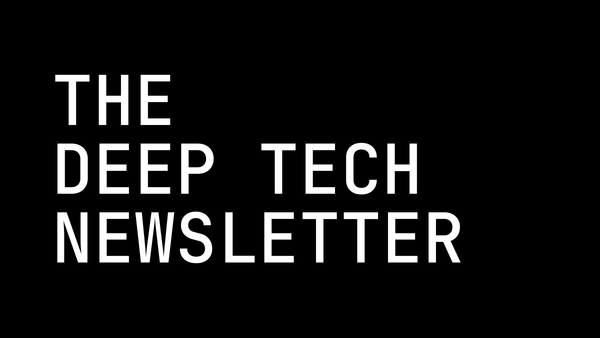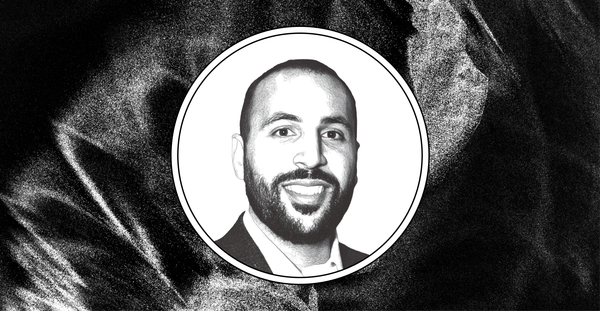Decentralizing Longevity Research Funding with VitaDAO’s Laurence Ion
Laurence Ion is a steward at VitaDAO, a community-owned collective funding early-stage longevity research and drug development. He is a longevity advocate, entrepreneur, investor, and a Dealflow Steward in VitaDAO.
Laurence Ion is a steward at VitaDAO, a community-owned collective funding early-stage longevity research and drug development. He is a longevity advocate, entrepreneur, investor, and a Dealflow Steward in VitaDAO.
In this interview, Ion discusses why DAOs are a superior model for funding longevity research, the perks of fractionalizing biotech IP, the need for a medical innovation jurisdiction, and more.

Haus: How did you get involved in VitaDAO?
Ion: My journey into VitaDAO started when I transitioned from being an everyday programmer to an entrepreneur and investor with a passion for applying scientific and engineering principles to create a lasting impact. I have always embraced the scientific method, being a techno-optimist fascinated by sci-fi and biology.
Unlike many of my peers, I have faced significant health challenges, experiencing firsthand the loss of vitality and the feeling of frailty that came with it. Despite my interest in medicine, I chose computer science as my career path, driven by my love for problem-solving. However, I quickly realized that coding alone was not the answer.
As an entrepreneur and investor, I explored various cutting-edge technologies such as cognitive augmentation through brain-machine interfaces and AI superintelligence alignment. This exploration revealed that while these innovations might be some distance away, achieving them requires us to prioritize health and longevity so that we may witness the birth of these advancements.
My love for life and desire to witness the future’s extraordinary developments motivated me to seek solutions that would extend my own life span and that of others. Coupled with my enthusiasm for crypto and a desire to transcend the limitations of traditional systems, I discovered VitaDAO, an organization that aligned with my passions and goals. And so, I eagerly joined their mission to revolutionize health and longevity.
Why is a DAO the right organizational structure for funding longevity research?
A DAO, or Decentralized Autonomous Organization, is the ideal structure for funding longevity research due to the power of decentralization. By utilizing tokens, we can unite and align a diverse community towards a common goal: advancing longevity research.
This model enables individuals to contribute their skills and capital to the pursuit of bringing aging under medical control, creating an inclusive and collaborative environment.
The current landscape of longevity research is limited, with only a few major companies such as Google’s Calico, Altos Labs funded by Jeff Bezos and Yuri Milner, leading the charge. However, concentrating billions of dollars on a handful of large companies is not the most effective approach to innovation. Instead, fostering a diverse ecosystem of startups is crucial to unlocking new breakthroughs.
VitaDAO addresses this need by enabling the funding of longevity projects in a crypto-first, crowdfunded manner; tapping into the growing interest in longevity within the crypto community. Pioneers like Hal Finney, the first recipient of Bitcoin and a cryonics enthusiast, and Brian Armstrong, the founder of Coinbase, who started a longevity company called NewLimit, have demonstrated this enthusiasm. Additionally, prominent figures such as Vitalik Buterin and Balaji Srinivasan are strong advocates for longevity research.
VitaDAO offers a crypto-native solution for funding longevity research while providing fractionalized ownership of biotech intellectual property. By translating research into an accessible format for traditional venture capitalists and angel investors, we are catalyzing the growth of longevity startups and accelerating the development of groundbreaking projects.
Why is fractionalizing research IP important? Does this mean VitaDAO members own the IP?
There are two ways to fractionalize IP-NFTs – tokens that represent intellectual property (IP). One is called FRENS – Fair, Reasonable, Ethical, Nondiscriminatory Sublicense. With this, members can get governance rights and various benefits, like discount vouchers, for each future drug. The other one is aptly named FAM – Fractionalized Asset Manager. With this, only members can use their $VITA tokens to purchase rights to the economic benefits from the drug development. So researchers can raise money for their projects via FRENS & FAM. Before fractionalization, members could only govern the DAO which owned all the assets, but now they can focus in on the projects they believe in.
Another use for the $VITA token is for institutional investors to participate in a sidecar fund based on their membership in VitaDAO. This way, venture capitalists & pharma can participate in the companies we spin-out while they’re still at the early stage, at very favorable terms. We usually put in around $250,000 and get exclusive rights for our community, but we can decentralize that a bit. When the project is ready to fundraise from traditional investors, the typical valuation ranges from $8-15 million.
How does VitaDAO improve the process of starting and funding a longevity biotech startup?
I’ve seen many longevity VC funds starting, but faced challenges due to a scarcity of startups in this domain. With VitaDAO, we’re incubating and funding the killer experiments enabling the research to jump from academia to something commercializable, creating more startups. As a community of researchers, entrepreneurs, operators and experts, it helps both with matchmaking so people collaborate and advance the drug discovery process, and with due diligence. As an angel investor, I had to spend a lot of time finding experts to help me perform due diligence on these startup companies, so when VitaDAO engages these experts to review these, and posts them on the forum, everyone can benefit, unblocking both aspects – for founders, and investors.
A key aspect of my role involves facilitating decentralized expert evaluations of projects. VitaDAO incorporates a unique sourcing component where anyone can refer or introduce researchers, with bounties offered for successful referrals. By leveraging our community of over 9,000 members, we discover and support new projects with much more scalability.
Once a project is identified, the referring individual is not obligated to remain involved in its daily operations. Instead, other community members can step in to incubate the project, including coordinating expert evaluations.
VitaDAO streamlines the biotech operations by collaborating with contract research organizations (CROs) and labs across the world, creating a dynamic ecosystem for nurturing and growing startups focusing on aging as a root cause to all age-related diseases, enabling increased healthy lifespans, instead of just managing symptoms and keeping people in a poor state of health for longer (in the current medical paradigm of waiting until you have the diseases).
Which of the projects funded by VitaDAO are you particularly excited about?
I can’t list all of them but I can highlight two.
One is the ApoptoSENS project at the SENS Research Foundation, who was started by Aubrey de Grey, who pioneered an engineering approach to aging in medicine. This project employs the damage repair approach by developing cell therapies that instruct the body’s immune cells — natural killer cells — to target and eliminate senescent cells, which are aged, harmful cells that refuse to die, much like zombie cells. Instead of using drugs to kill senescent cells, the therapy enhances the body’s own ability to eliminate them.
Another project, at the Korolchuk Lab at Newcastle University focuses on a small molecule autophagy enhancer, which could be administered as a pill rather than cell therapy. This enhancer promotes autophagy or “self-eating,” a process in which cells recycle their components to rejuvenate themselves at the cellular and tissue level.
Both senescent cell removal and autophagy enhancement have demonstrated impressive results in lab animals, though human clinical trials are still ongoing. While our projects are in the early stages, we have already made some intriguing discoveries.
What’s it like getting regulatory approval to work on these longevity therapies?
Navigating regulatory approval for longevity therapies is currently arduous, but leveraging crypto and communities aligned for collective action can flip that. Traditionally, developing a new vaccine can take 15 years or more. However, as demonstrated during the COVID-19 pandemic, it can be expedited to a few months when the will of the people calls for it. While ensuring safety and conducting human trials remains crucial, people often find ways to access new therapies, even if it involves exploring alternative jurisdictions. We have witnessed this in the past with birth control and HIV medications, as exemplified in films like Dallas Buyers Club.
Existing regulatory frameworks present several challenges, especially since aging is not classified as a disease. For instance, an 80-year-old with plaque-filled arteries and cognitive decline may not qualify for Alzheimer’s or heart disease treatment, preventing them from trying experimental gene therapies that could potentially help. We need improved frameworks that empower individuals to explore innovative therapies at their discretion.
In the future, VitaDAO aims to extend its impact beyond funding research and launching companies. By establishing a medical innovation zone — a special jurisdiction — we could facilitate the exploration of cutting-edge therapies and interventions that may contribute to increased longevity and overall well-being.
What scientific advances have occurred in longevity research over the past few years to make the commercialization of these technologies possible?
In recent years, groundbreaking results have emerged from longevity research, particularly in the areas of cellular reprogramming and damage repair. Numerous pharmacological interventions have been discovered that slow or reverse aging in animals by up to 30%. These can be combined for synergy.
Partial cellular reprogramming, essentially rejuvenating cells by restoring their youthful state. By expressing genes associated with younger cells, cellular function is improved. Epigenetics plays a critical role in this process, as it determines how cells interpret their genomic blueprints and which proteins they produce. While all cells have the same genome, epigenetics guide their specific functions, making it a key area of interest in the longevity research field.
The damage repair approach emphasizes preventive measures rather than waiting for age-related diseases like Alzheimer’s to develop. By proactively addressing things like intracellular aggregates and extracellular plaques, we can improve overall cellular function and maintain our bodies more effectively, much like the routine maintenance of a car. By prioritizing true preventative care and addressing damage before it becomes a larger issue, we can better promote long-term health and well-being.
VitaDAO just raised $4.1M from some pretty impressive institutions, including the venture wing of Pfizer. How will this funding accelerate the DAO’s goals?
The recent $4.1M funding from Strategic Members like Pfizer Ventures, will enable us to support new projects and double down on our existing ones, accelerating and spinning them out into new startups. Additionally, this financial backing will aid in growing our community, with aspirations to one day be as big and resourceful as a country.
It’s important to note that this wasn’t our first funding round; we raised $5.1M in June 2021 through a genesis community auction, which featured a fair launch allowing people to bid on the token price.
However, this marks the first time we’ve had institutional members make strategic contributions, and their membership brings invaluable benefits to the DAO. Alongside the capital injection, we gain assistance with deal flow and commercialization from the pharma & biotech side, as well as support in tokenomics, governance, and community growth from the crypto VC side.
HAUS specializes in public relations and creative services for deep tech startups.




